

11 Essential Things Angel Investors Look For in a Startup
9th March 2023
If you want an angel investor to invest in your business, you need to present more than a great product and a strong handshake. This article will help you prepare your business for angel investment. Importantly, it will explain exactly what angel investors want to know and demonstrate how you can do that:
- Ideas and people
- Founder/management team
- Products and services
- Revenue and profitability
- Financial literacy
- Momentum
- Marketing plan
- A business structured for investment
- Active involvement
- An exitable company
- A great pitch
Here, we explain 11 things angel investors look for in a startup.
1. The bottom line: ideas and people
At the most fundamental level, angel investors are looking for two things:
First, angel investors are looking for a brilliant idea in a credible market that’s highly scalable. They want your product to have good market potential for creating an impact on the world as well as the potential for success in a very exciting and dynamic market.
Second, they’re looking for credible, enthusiastic and exciting founders. They’re looking for a great idea, but it has to be backed up by a great founder. They know that anyone can have a great idea but only a great founder will be capable of implementing those ideas and turning them into viable, scalable and profitable businesses.
READ: What’s more important: the idea or the team?
2. A great founder, a great management team
Our best-selling book is called Investable Entrepreneur and not Investable Idea or Investable Business Concept because so much of it comes down to the founder or entrepreneur behind the business.
There are two ways of looking at this.
First, angel investors are looking for a founder with positive energy – excited about ideas and possibilities and opportunities.
In addition to this, investors are looking for founders who understand financial risk and reward, and how to manage that. They’re looking for founders who understand how to build valuable underlying assets in their business, and who have a clear implementation strategy, not just for the short term, but for the long term. For example: how we’re going to scale up and make the business a success.
Angel investors will be investing thousands or even millions of pounds into your business, so they want reassurance that their money is in safe hands. They will want to work with a founder who has great ideas, but also who they believe understands the financial risk involved, and can spend that money wisely so they deliver a return on the investment.
Second, angel investors are looking for a founder that can show that they have real core insights into their industry that no one else has. They want to know that you are leveraging your experience. For example, you spent ten years in a particular industry and can see an opportunity to develop a piece of technology that might transform that market.
It might not be you, it might be that someone in your founding team has that valuable and relevant experience. For example, you might have a CFO from a FTSE 100 company on your advisory board. That’s great, but many investors will also be looking for you to have someone with entrepreneurial success and experience within your team or advisory board.
3. A great product or service
Unique
There are many different investors that look for very different things in businesses so defining exactly what makes a great product or service is a challenge. However, at the purest level, a great product or service is one that does something different and unique in its space.
Scalable
The product needs to be in a scalable market, one that has huge potential to sustain a multi-million-pound revenue business.
Meaningful solutions
The product has to solve a meaningful problem that people are willing to pay to have solved. The dream is for recurring revenue – that they continue to pay to have their problem solved. For example, subscription-based models are very scalable because once you sign up a client they can potentially remain your client for years. Even if revenue is a small monthly amount, the lifetime value of that client is potentially huge if they remain a customer for years. Combined with hundreds or thousands of users, the revenue – and therefore the exit potential for that business – becomes huge.
Stickiness
The final thing is ‘stickiness’; a brand-new product with recurring revenues solving a really meaningful problem for lots of people who are willing to pay for it. Those people are unlikely to go elsewhere. The product is ‘sticky’.
For example, Xero accounting software. We use Xero because our accountant recommended it. We’ve been using it now for eight years and if we needed to make cutbacks, Xero would be one of the last things to go because it houses everything about the sales and accounting side of the business. It’s super sticky
4. Revenue and profitability
Recurring revenue
As mentioned in the previous point, the utopia is recurring revenues because:
- It’s highly scalable
- Recurring-revenue businesses tend to get a higher exit multiple than non-recurring revenue businesses (i.e transactional businesses). This is important, because when the multiples on exit are much higher, a company with the same level of revenues and the same levels of profit will exit with a much higher valuation. Transactional or marketplace revenue is great, but not as good as recurring revenues.
Profitability
Most early-stage investors would accept that if you’re looking to scale and you’re looking to raise investment, all the money that you generate is going to go back into the business. So it wouldn’t be unusual to see a high-scale business not turn a profit for two to three years.
And that’s okay. As long as there’s a long-term plan for huge profitability and you can get the returns from it. That is, after all, why you seek investment in the first place: because you can’t bootstrap it, you can’t fund huge scale in your business through current profits alone.
With regards to the figures you need to aim for, around percentages and profitability, it can depend.
If, for example, you were a pure SaaS (Software as a Service) technology business, you would typically be looking for 30%-40% EBITDA margins (profit margin) with an 80% gross margin. So it’s only costing you around 20% of your revenue to actually operate, deliver or produce the product, and a further 40% for operational costs, marketing costs and salaries, leaving you 40% of revenue as EBITDA.
That would be very different if you’re looking to scale a restaurant chain. A 10% EBITDA margin would typicalyl be seen as extremely good and very efficient for that type of business.
READ: The 12 most popular and effective revenue models for startups
5. Financial literacy
Investors are looking for financial literacy.
No one’s expecting you to be able to predict the future and know exactly what’s going to happen with your startup.
What they’re looking for is financial literacy, financial competence, and a good understanding of where you need to get to.
It’s okay to not make a profit in the first few years, but by year five you want to be in a position where you have built a highly exitable business, and all of the margins and ratios within your forecasts make this an attractive offer.
Investors know that the pathway to getting there might end up different to the forecast, but the planning in itself lets the investor know that you know what you’re doing and where you’re heading.
An investor will want to see that you understand key metrics and ratios such as:
- Gross margin
- EBITDA margin
- Marketing costs as a percentage of revenue
- What your customer acquisition costs look like
- Headcount and staff costs as a percentage of revenue
- Your monthly recurring revenues or your average order value.
Different industries and sectors will have different expectations for each of these.
For example, marketing costs.
- A high-scale technology subscription business with a SaaS business model might spend up to 30% or 40% of revenue on marketing because they’re looking to scale and their cost base is really low (they might have an 80% gross margin with 20% cost of goods sold).
- An agency or consultancy might spend 10% of revenue on marketing to scale because the cost of goods sold is much higher. Your gross margins aren’t 80%, but nearer to 50%, so you’ve got less to spend on marketing and you might grow slower as a result of the business model.
The business model is important in defining these figures. Understanding these metrics and ratios for a really good high-performing business of your ilk will help you map out your journey to getting there financially, so you can deliver investors a great return.
READ: How to prepare financial projections for potential investors
6. Positive early momentum – traction and validation
Early momentum is often referred to by investors as traction or validation. Positive early momentum depends on the stage you’re at.
Early stage
- If you’re in the concept stage, momentum might be that you have testimonials from big industry players who absolutely love what you’re doing and are supporting you.
- You might have a waiting list of people who want to adopt the product when it’s ready.
- You might have people who have paid deposits to secure the product and be one of your first customers.
- Maybe you have surveys and focus groups that show how popular your product might be – all helping you support the fact that this concept is something the market wants.
Later stage
- As you get to the slightly later stage – maybe those raising a seed or Series A round of investment – it’s all about real customers. Investors want to see actual customers and real revenues. It doesn’t need to be vast, but you want to be able to show that you are able to sell your product or service to the audience and that people are actually paying for it and getting value.
- Ideally, you’ll be able to document that revenue has been growing organically at an exponential rate over the past three to six months and doing so without any investment or lots spent on marketing.
- When you get to Series A an investor typically wants to know that you’re turning £80k a month (circa £1m in annual revenue). Once you hit that inflection point, you can then raise your Series A funds. You have shown that you’ve got enough momentum, that you’re full product/market-fit, and you’re ready to scale that up to tens of millions in revenue as opposed to the million that you’ve achieved so far.
READ: How much traction do you need to win over investors in a seed round?
7. A great marketing plan
Investors know that the biggest killer of startups is access to capital. The second is their ability to market and sell the product they’ve created, so it’s very important for founders to have a clear plan of how they’re going to take this to market and get their first few customers – even if they’re pre-launch.
If a business is post-launch, investors want to know how they’re going to adapt the strategy that got them their first handful of customers and scale that up to a mass market – or a larger group of early adopters.
Audience
A business will need to understand and describe who its audience is – the niche they’re targeting. Many founders make the error of thinking that targeting a larger, more broad audience with their marketing is better, but it is often the case that they end up spreading themselves too thin and their unique proposition gets diluted.
A sensible strategy says: ‘This is where we’re going to start, by targeting this group of people and we’re going to get them as our first set of people to adopt, then we’re going to move into this vertical and then into this vertical’.
Remember, a niche is nothing more than a campaign. A lot of people get scared about niching because they think that defines their business, but a niche is just a marketing campaign to that subset of potential customers. Businesses should have plans to reach all potential niches over time, but not all at once.
So you’ll need to have clearly defined audience segments and a strategy for reaching each of these audiences.
READ: Startup marketing strategy: 6 approaches every founder needs to know
Partnerships
Partnerships can be a great way of reaching new audiences. It can be a good idea to partner with a company that has an existing captive audience that you are targeting. You can then use that partnership to launch your product to their customers.
As your reputation as a business grows, and you can show case studies and results from previous partnerships, you’ll be able to open doors to bigger organisations who can support you in a similar way.
Over time you’ll find that this generates a snowball effect that leads to huge scale extremely quickly.
8. A business structured for investment
You need to make sure that your company is properly structured to receive investment and there are some specific things that will crop up during the legal and due diligence process with investors.
Investors will be interested in the following:
- How the company is registered – you need to have a limited company as it needs to have shares you can sell
- You need to have enough shares to work with. You may register with one to 100 shares as a standard. You then need to do a share split to create 100k or 1m shares so they’re easily divisible
- You need to have your shareholder agreement in place
- You need to have your articles of association in place
- You’ll need to formalise how your Board of Advisers works and who is on it
- You’ll need to be clear on your current Cap Table. They’ll look to see if you already have lots of people who own shares (as for some investors this may make you less attractive). They’ll want to know what authority those shareholders have over the business and how involved they can get as a minority shareholder. These things can be critical in later rounds of investment, so it’s important to think about these things in the early stages.
An investor will also be likely to want to edit and add to the terms in these legal documents as part of the negotiation process. As such, you will need a decent lawyer because they naturally want to protect their downside, but equally, you need to protect yourself as well. You need to make sure that you’re negotiating those terms in the right way, and that the investor doesn’t add any unpreferable terms in there, for example, preference shares.
If you’re in the UK, you should also make sure you’ve got EIS or SEIS Advance Assurance in place. This helps investors protect the downside and provides a huge amount of added benefit on a successful exit to the investor (for example, no capital gains tax). This also reduces the risk because there’s loss relief, so, if their investment fails, they get to claim back some of the losses against future tax bills.
9. Active involvement
Many angel investors will want to be involved as an advisor – either formally on the board of advisors or as a NED (non-exec director) role.
Investors are often investing in businesses that they feel they can contribute to in some way so you need to be careful about who you bring on board.
It’s often called ‘smart money’ because, if you bring on the right people, their investment and advice can really elevate your business. Equally, if you bring on the wrong people – for example, someone who has a very different vision to you – you can end up with conflict. So choose investors appropriately.
10. A highly ‘exitable’ business
Most, if not all, angel investors will be interested in selling the company at some point to get a return on their investment. Very few are looking to take dividends from the business as a way of generating income from their investment. They would rather see profit reinvested into the business with the goal of selling it in the future.
As such, your goal as a founder is to make the business exitable, to make it something that someone wants to buy from you for a huge sum of money at some point in time.
There are a few different routes to exit:
IPO
Sale of the company might happen on a large scale as an IPO where the company is listed publicly on the stock market allowing investors to sell their shares and make a return.
Trade sale
A company might do a trade sale, where the founder sells the business to another company – such as a competitor or a partner – and they buy you out, usually in return for cash, shares or both. If exiting for a mix of cash and shares it means founders become shareholders in the company that acquires them.
Competitors often buy startup companies who are eating into their market share or have some new exciting product/service that they want. Instead of spending millions on R&D, they just buy the company with the innovation.
Private equity
Once you hit about £5m in revenue, the smallest private equity firms (PE) start getting interested in potential acquisition so they can form a group of companies within their portfolio. This helps them to save costs on management fees because they can do it on a larger scale across the portfolio of companies and make the business more profitable. Typically they will then scale the business and sell it to a larger PE firm.
Management buyout
Your senior leadership team might decide to raise some investment under a new company to buy your company and your shares and end up owning the company themselves, having worked in it for years.
Companies will usually raise three rounds of investment and then exit. Some raise 10 or more rounds, but three is the average.
11. A great pitch presentation
This brings us full circle. Investors are looking for two things:
- A great idea in a scalable market with a huge opportunity
- A credible founder who can make that idea a reality
So how do you get that into a pitch?
In our book Investable Entrepreneur, our co-founder James Church talks about the five acts of a great pitch. The five-act format has been used to tell stories for centuries. The ancient Greeks invented the concept and Shakespeare was a big fan – all of his works are in five acts. As a society, we are wired to digest content in this way, so you can leverage that in your pitch.
READ: Investment pitch structure: why your pitch structure is vital
- Act 1: The hook
- What’s the big idea? What’s the vision? Get me excited about what the future looks like, as a result of your technology being successful, your startup being a success
- Act 2: The essence
- This is the value proposition. What’s the problem you’re solving? What are the details of the solution? Who is this for? Who’s the target audience? What’s the value proposition for that audience?
- Act 3: The evidence
- This is the climax of the story – it’s where you aim to get the complete buy in from an investor. This brings us back to traction and validation. How can you evidence that this is either something the market wants and something the market needs? Is it something that the market is currently adopting and doing so at an ever-increasing rate? Once you’ve got that evidence, you’ve got the investor’s complete buy-in: it’s a great solution to a meaningful problem and you have the data that proves it’s something they want to buy.
- Ideally you want to share some key facts that deliver a killer blow: ‘I’ve actually got a waiting list of a hundred people who are ready to pay for this’. Or ‘I’ve actually sold this to 1,000 people and I’m currently signing up another 20 people a week’. What you’re doing here is saying, “we’ve got momentum”.
- Act 4: The plan
- The final two acts transition from the emotional to the rational. This is the summary of your business plan: how are we going to scale this business up? What does our marketing strategy look like? What’s our product development roadmap? How are we going to implement the growth in this business in the short and the long term?
- Act 5: The ask
- Finally you have to ask for the money: how much money are you looking to raise? What deal terms do you expect? What kind of valuation are you expecting to do a deal at? It’s really important to have those details to hand, so an investor knows you’re within a negotiation tolerance. You’re not trying to ask for too much or expecting too high a valuation for a business that’s too early in its journey. If you think you’re valued at £20m and an investor thinks you’re valued at £1m, there’s no point in further discussion. If you think you’re valued at £4m and the investor thinks you’re valued at £3m, you can probably come to some agreement.
Many founders make a key mistake – probably because they’ve been watching Dragons’ Den or Shark Tank. All too often, founders think they’re pitching for investment. They imagine they’re in a room and there’s a stack of cash on the table and they’re going to pitch and someone’s going to say ‘I’m in, I want to invest’.
It doesn’t work like that. That’s made for TV.
You never pitch for investment. You never pitch for an investor to invest their cash. You pitch for an investor to invest their time. The role of your pitch is to say ‘Here’s me. Here’s my concept. Here’s our strategy. Is it worth us sitting down and exploring this further?’
If so, there will be a series of second and third meetings, due diligence and legals. Only then will you get your money.
Your pitch is to summarise everything in a few minutes – in 15 to 20 slides. It should be enough to give an investor confidence that it’s worth their time to arrange a second meeting with you. You don’t need to get everything across in the pitch, just enough to intrigue them and make them want to find out more.
To find out everything else you need to know about becoming an Investable Entrepreneur, you can download a free copy of James Church’s bestselling book, Investable Entrepreneur.
UP NEXT: Inside The Mind Of An Investor: 7 Factors That Will Convince Them To Back You
Learn how to convince investors
Investable Entrepreneur takes you through our winning methodology – the process we use to increase our client’s chances of raising investment by more than 30x.
“This book will help you translate your entrepreneurial vision into something investors can get behind.”
Daniel Priestley, CEO and founder, Dent Global and four times best-selling business author
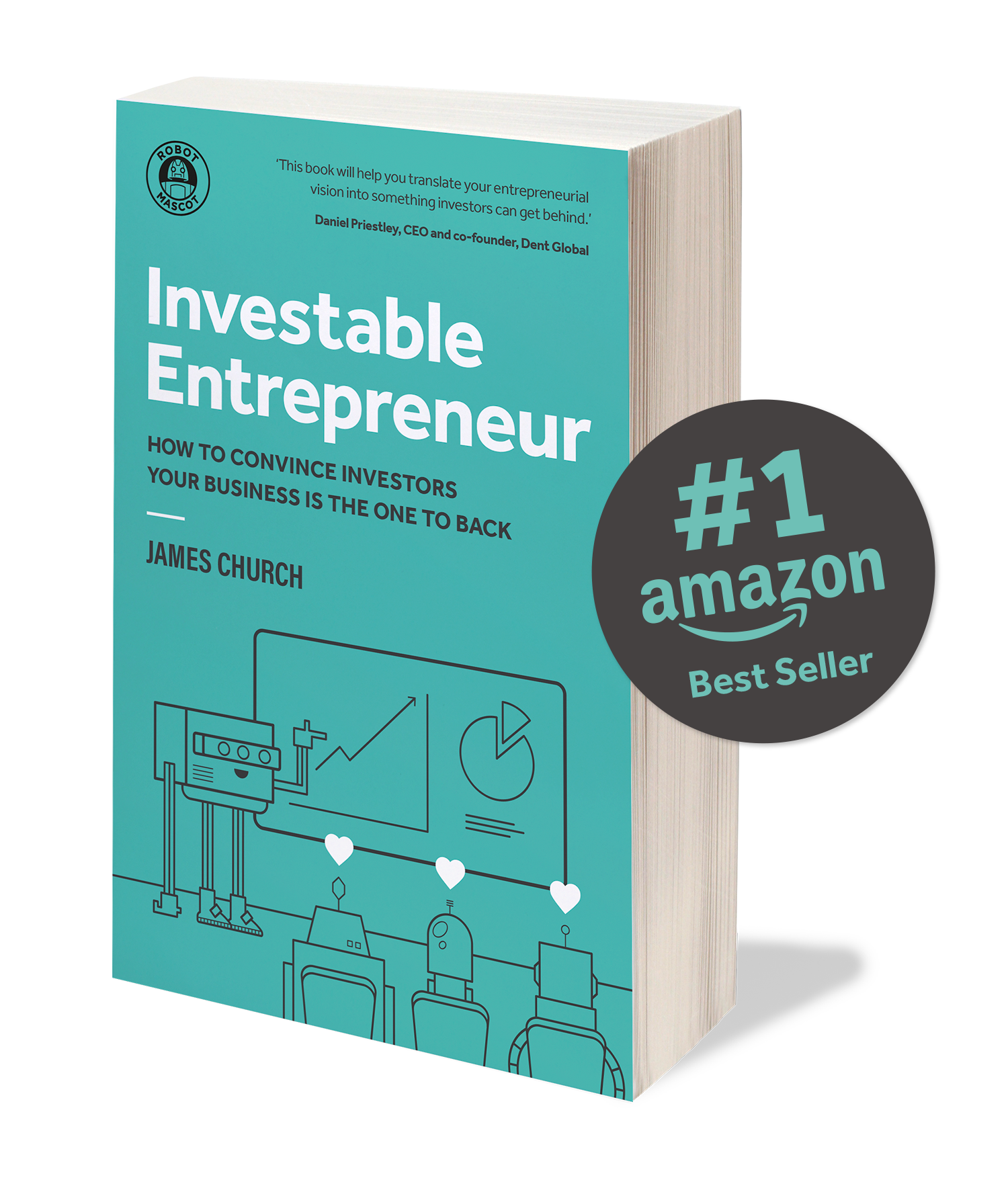
Keep up to date with what we’re up to via email
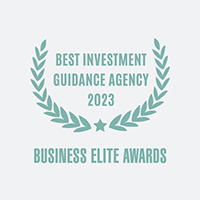

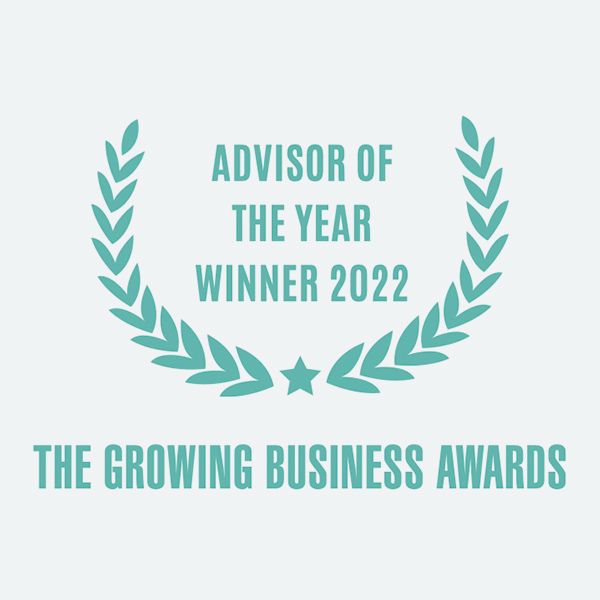
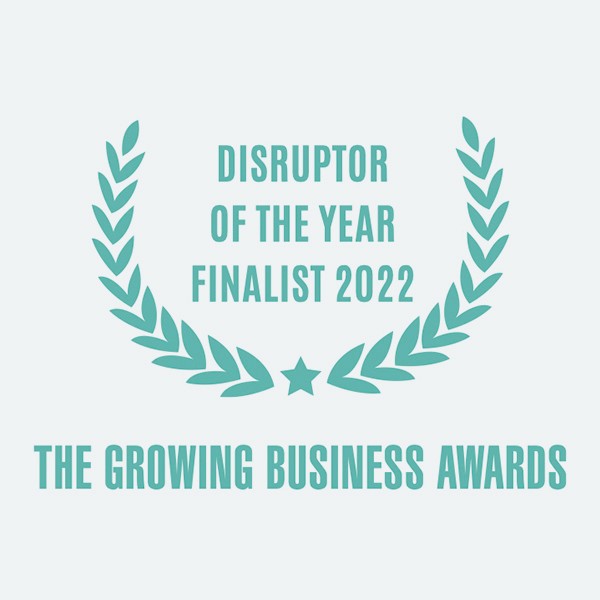
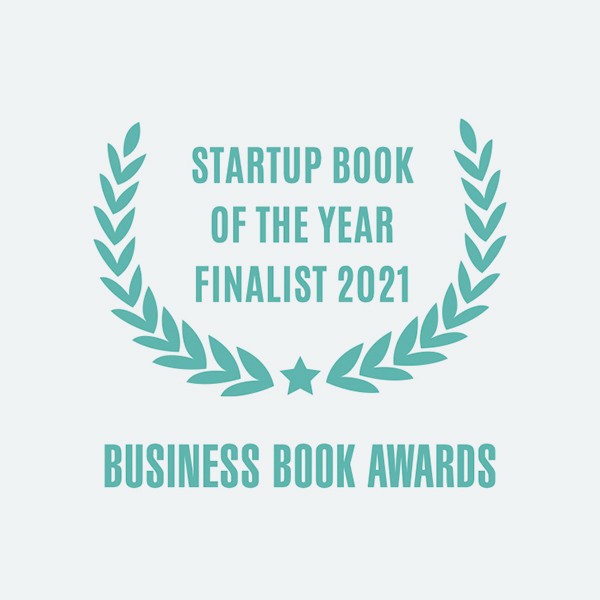

Copyright ©Robot Mascot Ltd. All rights reserved.








